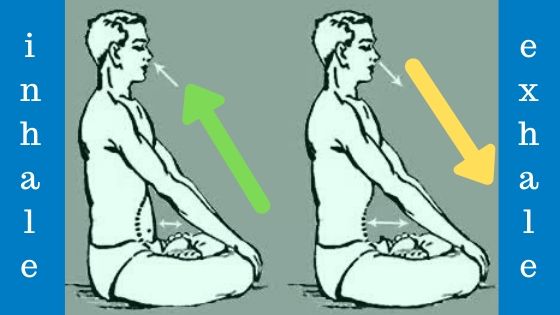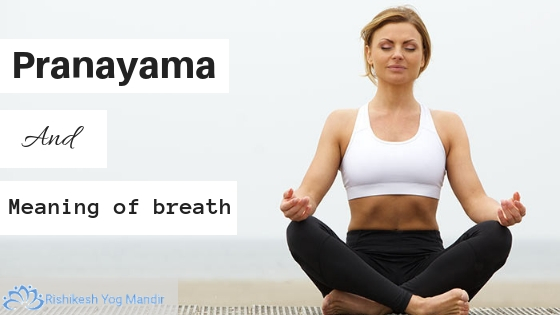Breathing is something we do regularly, whether consciously or unconsciously. It is one of the most vital functions of the body. In Yoga, the practice of conscious breathing is called pranayama. In ashtanga, yoga pranayama is considered as its fourth extremity. Infamous as the heart of Yoga, these breathing exercises, aka pranayama, teach us to use our lungs to its finest capacity; resultantly, each and every cell of our body get an ample amount of oxygen. However, there are various types of pranayama, and some of these are simple, yet effective, and can easily be practiced by beginners.
The synthesis of pranayama in 200-hour yoga teacher training in Rishikesh creates a harmonious synergy. Participants not only refine their understanding of breath control but also learn to impart this ancient wisdom to future yogis.
Practice of Yoga
Everyone has been talking about the advantages of the practice of yoga on the physiology of the human body. The changes depend on several factors, such as the mental and physical condition of an individual. The practice of Yoga, including self-compassion, is one of the primary beliefs of Patanjali Yoga Sutras. Within the Yoga Sutras are a set of 196 aphorisms or sutras that detail the recitation process of the practice of Yoga and meditation.
Pranayama meaning
The word pranayama derived from Sanskrit word prana that means life force and the Ayama means to regulate. Thus, the pranayama refers to the regulation or extension of your life force. It means pranayama is a practice to use your breath to soothe every fluctuation of your racing mind and make you become mindful about one of the most important functions of life that are our breath.

How Pranayama Works
Yoga practitioners have been using pranayama for thousands of years to guide them through their yoga and meditation practices. Deliberated breathing helps quiet the mind during meditation, and brings fresh oxygen into the body to support it during difficult or challenging yoga poses. Assured pranayama techniques are also thought to help the body release toxins.
Pranayama can quiet the mind is what makes it useful during times of intense stress, emotional upset, anxiety, or trauma. Anyone can gain from practicing pranayama any place, at any time.
Types of Pranayama techniques:
In addition to long and deep breathing exercises Here are some major types of breathing exercises in Yoga comprises of kapalbhati pranayama, victorious, or ujjayi breath, alternate nostril breathing and breathe of fire. Catch the detailed glimpse of different types of pranayama, and some detailed breathing exercises benefit with 500 hour yoga teacher training in Rishikesh, for your purification of mind and subtle energy channels.
-
Kapalbhati Pranayama:
Also known as skull cleansing pranayama, in kapalbhati pranayama, your inhale is passive, but your exhale is active, which means your exhale is forceful. Make sure that your exhalation is done by the involvement of your abdominal muscle and upward movement of your diaphragm. Since it is an advanced breathing exercise, it is must that you learn it under the guidance of an experienced yoga teacher.
-
Ujayyi or victorious breath:
It is performed only through the nose and involves a minor constriction at the back of the throat. Take a long breathe in with the mouth closed and when you do, make the sound Aaah; do it again on breathe out. When appropriately practiced, victorious breath is said to sound like the deep-sea and is often referred to as oceanic breath.
Victorious breath is supposed to produce heat in the body and rid the muscles of lactic acid build-up.
-
Bhastrika pranayama:
Breath of fire is most frequently used in the practice of Kundalini yoga and is supposed to relieve tiredness by restoring vitality and vigor to the nervous system. Bhastrika pranayama is one of the most intense physically and energetically, then kapalbhati pranayama. In bhastrika pranayama, the inhalation and exhalation both are active, and it is a must control over the diaphragm. Breath of fire is generally practiced for thirty seconds up to three minutes.
-
Nadi shodhana:
Also known as alternate nostril breathing is one of the most relaxing breathing exercises that is known to calm your nervous system. Start your practice by taking slow and deep inhale from your left nostril while keeping your right nostril closed with your thumb after your inhalation opens your right nostril and exhale.
Pranayama techniques all involve breath control and observation. These simple yet effective breathing exercises benefits are immense. Our state of mind is directly related to the quality of Prana within. Our breath directs the flow of our thoughts, and Pranayama techniques help to stable those qualities of Prana and bring us closer to a state of homeostasis.
Also read:
Yoga mudra and their benefits | Types of yoga Mudra
Exercise to start your day like a yogi | yoga in the morning
